When the Cabinet Office issued its call for evidence for an investigation into social mobility and the professions, it was very clear on one point: it did not want any backchat on the impact of an unequal society on social mobility.
There is deep, albeit recent, embarrassment in government about the growing gap between rich and poor after 12 years of a Labour government. The presumption was that the blame for the fall in social mobility must lie elsewhere – and when former cabinet minister Alan Milburn MP began his review back in January, many felt this was an attempt to blame the professions. The City especially is stuffed with toffs, the argument goes, because they have found ways of excluding working class and lower-middle class talent.
If the original aim of the report was to find scapegoats and have done, it shows in places. The beginning, middle and end heavily reference how many people government policy has lifted out of poverty, and how many more go on to higher education than did so before 1997. The reason why social mobility has declined, the report insists, is that filters have been introduced that determine the sort of person a profession admits. The authors do not mention growing inequality here – you have to return to the call for evidence to know that this is a proscribed subject.
Elsewhere, the report rises above this political agenda. The debate on social mobility often lapses into the anecdotal, but the report is keen to nail the reality of a decline in social mobility, sector by sector. Taking data on two cohorts of lawyers, one set born in 1958 and another in 1970, the point is simply made. Two in five of the ’58s grew up in families with above-average incomes; for those born in 1970, that figure rises to more than six in 10 (63%). ‘Those figures confirm what I’ve felt to be the case,’ Social Mobility Foundation trustee Russell Lewin, a partner at Baker & McKenzie, says: ‘Those born in 1958 – the year I was born – found the profession to be more socially diverse than it is now.’
Solicitor-advocate June Venters QC backs that view: ‘It’s probably true to say that the City firms are more exclusive now – you need to come from a more affluent background to make it through some of the filters they have been applying for a while now.’
Former Law Society president Paul Marsh, however, sounds a note of caution. He is keen to point out that ‘social mobility data is not widely collected because there is no agreed standard of measurement’.
Outside the Russell Group
Marsh and others feel that more credit should be given to solicitors for the serious efforts they have made in the related areas of diversity and inclusivity. There are key proposals for all professions in the report that some leading law firms have already put into practice. As a spokesperson for one Magic Circle firm says: ‘In some of the debates around diversity, and action that has followed on from them, race and ethnicity have been proxy issues for a discussion on social and economic disadvantage.’
If the report is implicitly taking aim at firms containing growing numbers of the ‘super City-gent’ types, it’s also true that these same high-rolling firms have been quietly changing practice.
All the magic circle firms are now targeting campuses outside the elite Russell Group universities, not just on the milk round but also by appointing students as campus link representatives. Senior partners at City firms, mostly white and privately educated it ought to be said, can talk with conviction about the way the legal profession needs to change. And privately, partners at firms like Eversheds, Addleshaw Goddard and Baker & McKenzie are adamant that taking more applicants from non-Russell Group universities has raised, not lowered, the standard of their trainee intake.
It’s early days, though. As Lewin says: ‘You can’t draw firm conclusions from a few years only of this. But from thousands of applications, early experience tells us that we are very happy with the candidates we’ve taken on.’
If there’s some hesitation about reading across that commitment from diversity to social mobility, it is because the impetus behind the diversity agenda comes very strongly from clients, and those clients aren’t asking about social mobility as such. As one partner at a national firm puts it: ‘Lawyers are tarts, aren’t they? If the client says they want something, we will respond.’
But whereas clients such as BT and many US-parented companies have made clear how seriously they want their advisers to take gender, race, religion and sexuality, social deprivation is not as firmly on the agenda. ‘Question in tenders can be quite open,’ Lewin notes. ‘So you could decide to talk about this, but we’re not seeing it specifically asked for.’
As in other professions, there is a clear expectation that graduates keen to secure an offer of a traineeship or a graduate entry job will have shown their commitment by having completed a vacation work placement at a similar firm. According to H4 consultant Julia Chain, such placements are ‘practically a requirement’.
The report places huge emphasis on how internships are accessed, and by whom. The argument runs that participation is a filter for applicants, but also an ‘outreach’ opportunity – one of a number of chances firms have to show people taking part that a professional career is a goal they could attain.
That is a point recognised by national firm Addleshaw Goddard. For the last two years, the firm has offered eight of its summer placements to students without training contracts who come from less conventional academic areas. The final list is compiled not by the firm, but by BPP Law School’s career service.
Outreach benefits
As the firm’s HR director Judith Hardy explains, applicants ‘may have been excluded from joining the firm under our usual academic criteria’. Candidates who perform well have the option of applying for a training contract. And this approach has led to direct hires: two training contracts were offered in 2007 and two in 2008.
Anecdotal evidence from students who have taken part in targeted internships strongly supports the ‘outreach’ benefits of these schemes. The Legal Launch Pad initiative, organised by the Black Lawyers Directory (BLD), cites the experience of students who felt more comfortable about applying for a traineeship after work placements set up by BLD with leading law firms and businesses such as Barclays. The last set of placements produced one offer of a training contract from Slaughter and May to a participating student, and another from DLA Piper.
‘The work placement prepared me to hit the ground running as a trainee in the future,’ enthuses Patience Arinaitwe, who took part in the scheme while an LPC student at BPP Law School. ‘A mock interview experience and feedback were invaluable and the guidance I have received from my mentor has given me a more focused approach.’
Another scheme participant, Phoebe Lam, a graduate diploma in law student at the University of Westminster, points to the practical advantage: ‘Trainees were keen to share their experience and to offer advice. The scheme provides valuable insight into the working culture.’
Few large commercial firms go as far as the Addleshaw Goddard and BLD initiatives, but they are becoming fairer and more transparent in the award of internships. Virtually all have information on how to apply on their websites and, in places, the Gazette uncovered some interesting changes in practice. As one partner at a City firm confides: ‘We do still have to accommodate requests from clients and partners for work experience for offspring who wouldn’t meet our normal criteria. It’s awkward not to. But those interns are dragooned into the same batch. They’re not taken seriously, and we’re not letting them mix with legitimate interns.’
Geography is an issue identified by the report, which shows that the vast majority of intern opportunities are in London and the south-east. ‘You can’t change that,’ says Lewin. But when firms set up intern schemes, ‘they must have an eye on how someone not based in London or the south-east would take up a position’.
‘We can’t have a situation where an able student from Tottenham might have chances, but one from Truro does not,’ he says. It’s a point that the Social Mobility Foundation considers for students it works with, but practice here would have to go much wider.
A bigger challenge for the professions is geographical coverage of mentoring and outreach programmes. The contact with professionals these provide is deemed vital by the report for children as they finish primary school, and again as they choose their A-levels.
Professional staff in City firms can spend time in target schools in nearby Tower Hamlets and Hackney, and Birmingham, Leeds, Manchester and Bristol may also be well served for lawyers. But coverage in areas where students are further from hubs of professional services firms needs to be wider.
A-level obsession
Hardy touches on one particular point of controversy for the legal profession. At the top 20 firms, and many others, a filter of grades AAB at A-level is used to sift candidates. The Addleshaw Goddard scheme wins praise from Chain for offering some who do not meet that requirement a chance to prove themselves. By focusing on graduate students, already at law school, degree results, for example, trump A-levels.
That small example is rare – most firms maintain that you can widen the net and fish in ‘wider pools’ without dropping the attachment to AAB. Lewin goes further in defence of AAB: ‘It’s also there as an objective standard to protect good candidates. They can’t be displaced by poorer performers who just look the part.’
It’s a dividing point that could become less significant if law firms focus on alternative points of entry into the professions. The report becomes a little vague here, aside from urging more ‘paraprofessional’ routes. ILEX, the professional body for legal executives, clearly thinks a chance to expand on these routes was missed by Milburn’s panel.
ILEX president Judith Gordon-Nichols explains: ‘We were delighted to see that the issue of social mobility and access to the professions is being taken seriously. But by perpetuating the myth that university is the only way to become a lawyer, it seems that it’s the government itself which is harbouring a closed-shop mentality.’
But the ‘paraprofessional’ route has always been a hard one, Venters says, and that doesn’t seem set to change any time soon. ‘I was born in 1957,’ she says. ‘It was a hard route then, and it’s a hard route now. My parents were working class and, although I was at grammar school, I had to leave at 15, do a secretarial course, and work as a secretary and then a legal executive while studying in my own time.’ Deterrents like that have led to increasing ‘professionalisation’ of the law, she says. ‘If you want to become a legal aid solicitor, the entry pay is so bad that you need financial backing to do it. That’s one of the things that’s making the law more socially exclusive.’
Against the tide
Best practice in the legal profession, if spread more widely, could reduce the ‘social exclusivity’ that Milburn’s committee identifies. Some examples are more imaginative and go further than recommendations contained in the report. Indeed, there is a suspicion that the authors’ views of the legal profession are overly shaped by the experience of the bar. Law firms feature in none of the case studies, whereas chambers and the bar feature twice.
It’s certain that initiatives now in place will produce strong anecdotal evidence that individuals from lower and middle-income backgrounds have been helped in to professional careers. But if there’s cause for pessimism, it comes from the longer experience of some Russell Group universities in broadening access. As one former student union sabbatical worker responsible for access problems at one such university says: ‘I know of so many people who are here because of the encouragement they got through work that we do. But still the proportion of those coming from state schools is static. You do start to conclude that, while things would be even worse without these efforts, what we are taking on is much bigger than our efforts here.’
That, as the call for evidence made clear, is one point that is up for discussion.
Eduardo Reyes is a freelance journalist


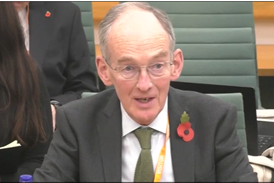
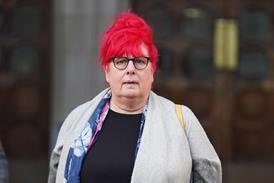



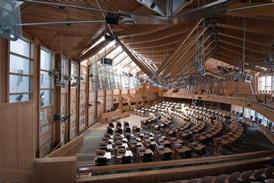
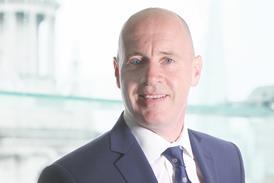


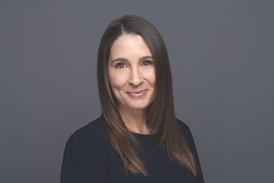


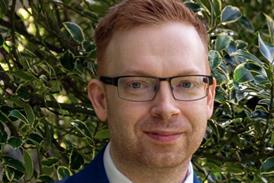
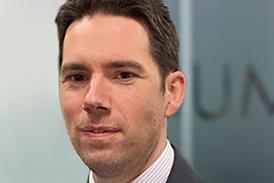

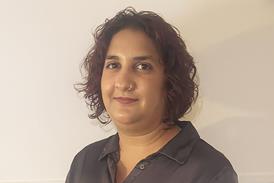

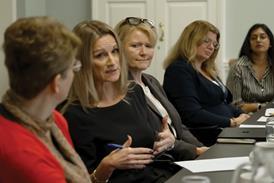







No comments yet